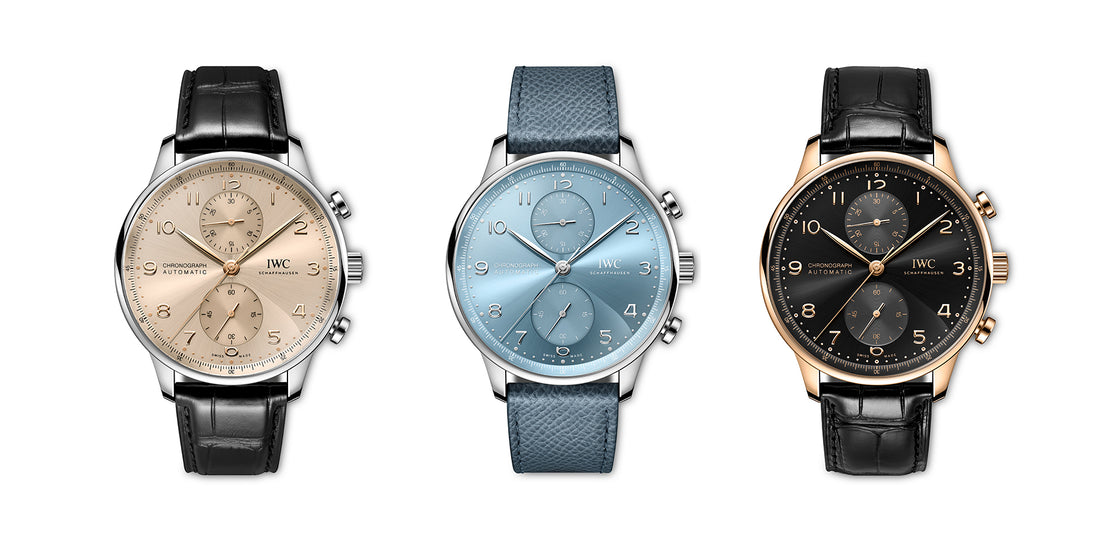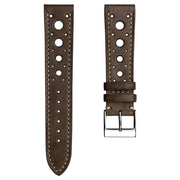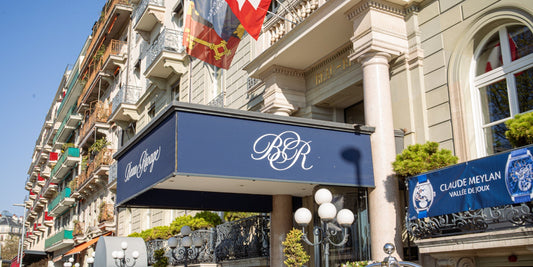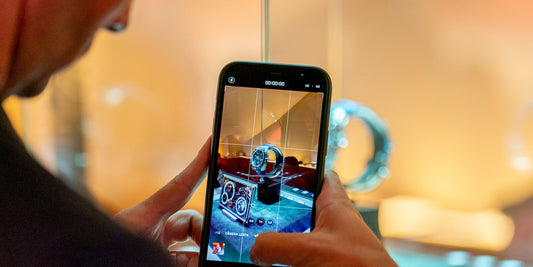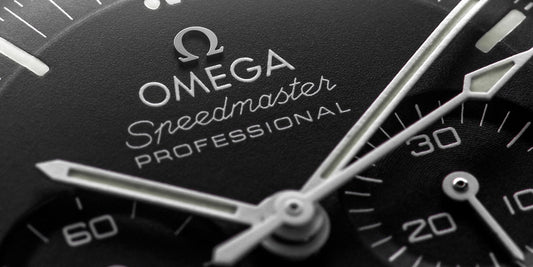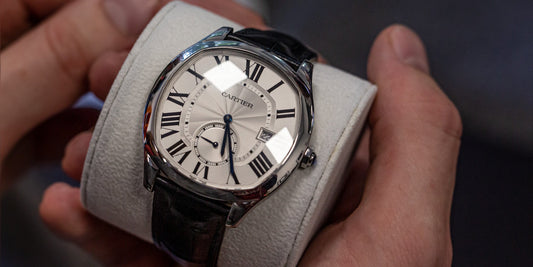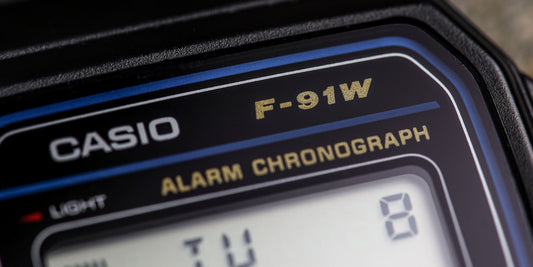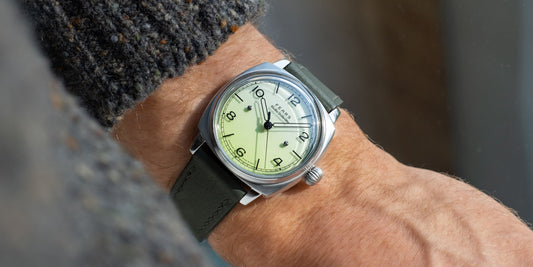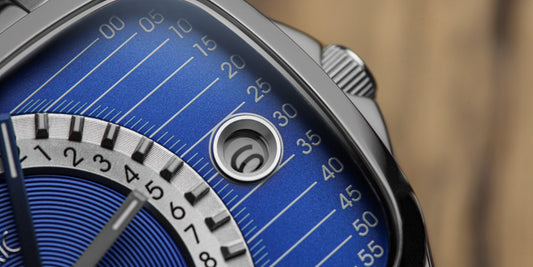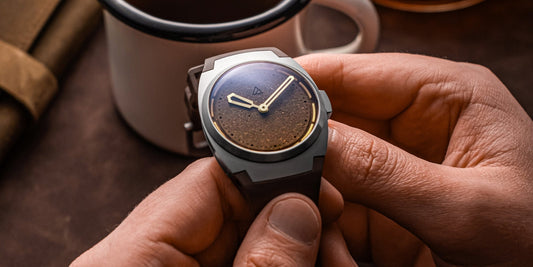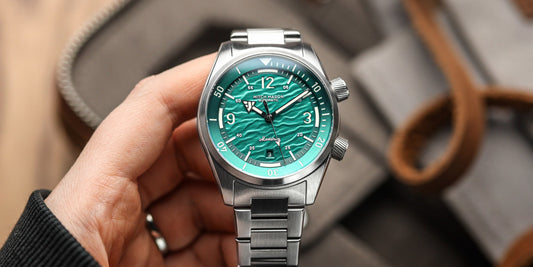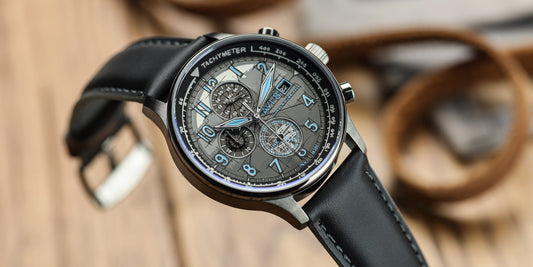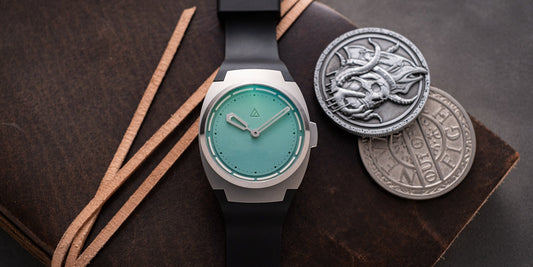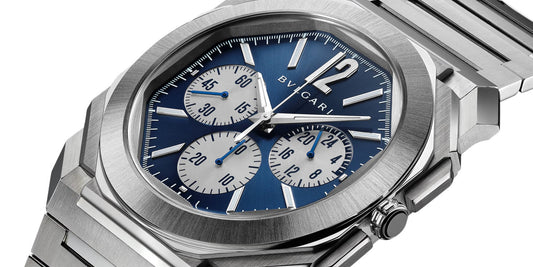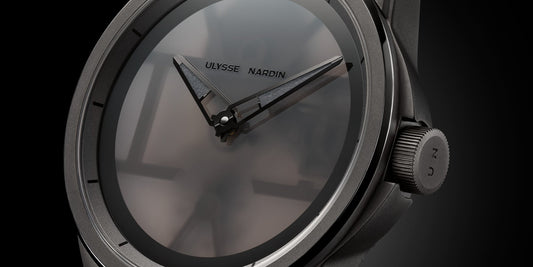There can be no doubt that the IWC Portugieser Chronograph has become a classic model for the brand. It smartly uses the abundance of space made available by the standard Portugieser’s numeral placement and fills the upper and lower hemispheres of the dial with sub-registers.
I’ve always been a fan of the twin-sub-dial layout. That is especially so when arranged along the vertical axis. Whereas the 3 and 9 o’clock placement of sub-counters gives off a mid-20th century vibe, the 12 and 6 layout somehow seems to hark back to an even earlier period, recalling early marine chronometers and a bygone era of exploration.
 IWC Schaffhausen Portugieser Chronograph - Credit IWC
IWC Schaffhausen Portugieser Chronograph - Credit IWC
Perhaps that’s why this display format works so well for the IWC Schaffhausen Portugieser. I find the time-only variants a little sparse. Beautiful, for sure, but almost unfinished to my eye. With the chronograph, however, I feel we have the truest expression of the Portugieser family, which would make one of these three novelties my personal pick from IWC’s releases this year at Watches & Wonders 2024.
Three new colours have joined the collection. They are called Horizon Blue (Ref. IW371626) , Obsidian Black (Ref. IW371625), and Dune (Ref. IW371624). Maybe I’m biased by my enjoyment of Denis Villeneuve’s latest instalment in the epic Dune series, but the latter is my favourite. It also comes at a good time: the past six months have seen more and more sandy shades hit the market, with this colour clearly enjoying its time in the sun (no pun intended).
All three colours have identical layouts with the chronograph 30-minute counter sitting at 12 o’clock and the going seconds of the IWC-made 69355 automatic calibre, which boasts a 46-hour power reserve and a 28,800 vph operating frequency.
 IWC Schaffhausen Portugieser Chronograph - Credit IWC
IWC Schaffhausen Portugieser Chronograph - Credit IWC
Pleasingly, the movement’s operating frequency (which is often one of those specifications very few people care to know) manifests on the dial rehaut ring, which shows “quarter second markers” as IWC terms them. While splitting seconds into four pieces might seem like an odd thing to do, the reasoning for it derives from the fact that a 28,800 train count (otherwise known as 4 Hz) ticks eight times per second (completing four full oscillations and eight vibrations every second). That means that a chronograph hand running at the same frequency will land either directly on or directly between the quarter-second markers, giving you a reliable readout to 1/8th of a second (assuming your eyes are good enough to read those teeny tiny markers stuck right out on the edge of the dial there).
Probably the most important thing to discuss about these three models is the choice of case materials. The Horizon Blue dial comes in a white gold case, the Obsidian in a 5N gold case, and only the Dune in a stainless steel case (compounding my personal preference for it even more). This is an interesting but welcome choice from IWC to ring-fence certain dial colours (perhaps the two they deem to be the most timeless) as gold models while allowing the trendier piece to act as the volume driver.
 IWC Schaffhausen Portugieser Chronograph - Credit IWC
IWC Schaffhausen Portugieser Chronograph - Credit IWC
I actually like this strategy and think it makes sense when one appreciates a) how many pieces of each price tier the brand hopes to shift and over which timeframe and b) how to leave multiple strategic avenues open to the brand to adjust should sales not be as they predict for any of the three models.
Whichever colour dial you prefer, you should be confident you’re getting a finely made component. Each dial begins life as a brass black before a sunburst finish is applied. Next, the dials are colourised before 15 layers of transparent lacquer are applied, delicately ground flat, and then finished with a high polish. In total, there are more than 60 steps involved in bringing one of these dials to life, and, in real life, it is worth saying that it seems every one of those steps was worth its while.
Our Choice of Straps
Whether it’s the Horizon Blue, Obsidian or Dune dial that piques your interest, we have a catalogue full of stylish strap solutions for the IWC Portugieser Chronograph’s. Our Boutsen Racing strap comes in 9 bold colours and has an aged and earthy look that will stand out beautifully against the dial of your choice. Another great leather alternative is the Vintage Cavallo strap, meticulously handmade using vegetable tanned horse leather for a comfortable and durable finish.
- Regular price
- £128.00
- Regular price
-
- Sale price
- £128.00
- Unit price
- per
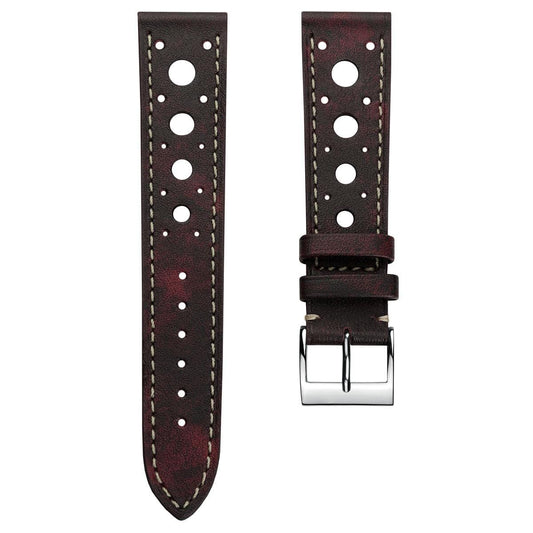
- Regular price
- £128.00
- Regular price
-
- Sale price
- £128.00
- Unit price
- per
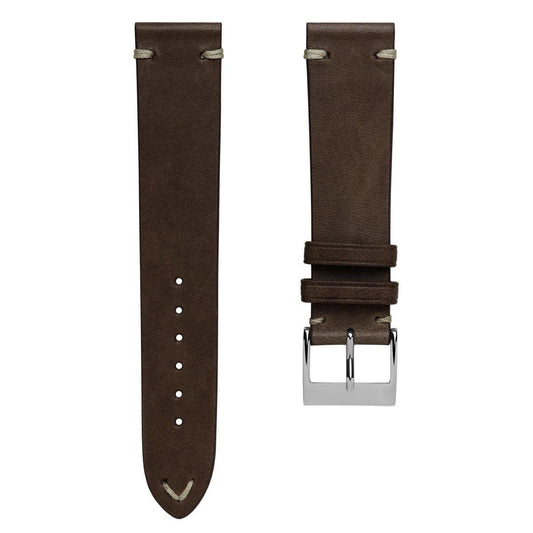
Technical specifications
- Name: IWC Schaffhausen Portugieser Chronograph
- Reference: Ref. IW371626: 18-carat white gold case, Horizon blue dial, Ref. IW371625: 18-carat 5N gold case, Obsidian dial, Ref. IW371624: Stainless steel case, Dune dial
- Movement: IWC-manufactured automatic calibre 69355, with a 46-hour power reserve
- Case dimensions: 41 mm wide, 13.1 mm thick, water-resistant to 30 metres
- Case Material: Either white gold, 5n gold, or stainless steel
- Crystal: Sapphire, double box-glass, antireflective coating on both sides
- Dial: High-polished lacquer dials in either Horizon Blue, Obsidian Black, or Dune
- Strap: Complimentarily-coloured leather straps from Santoni with material-matched clasps
